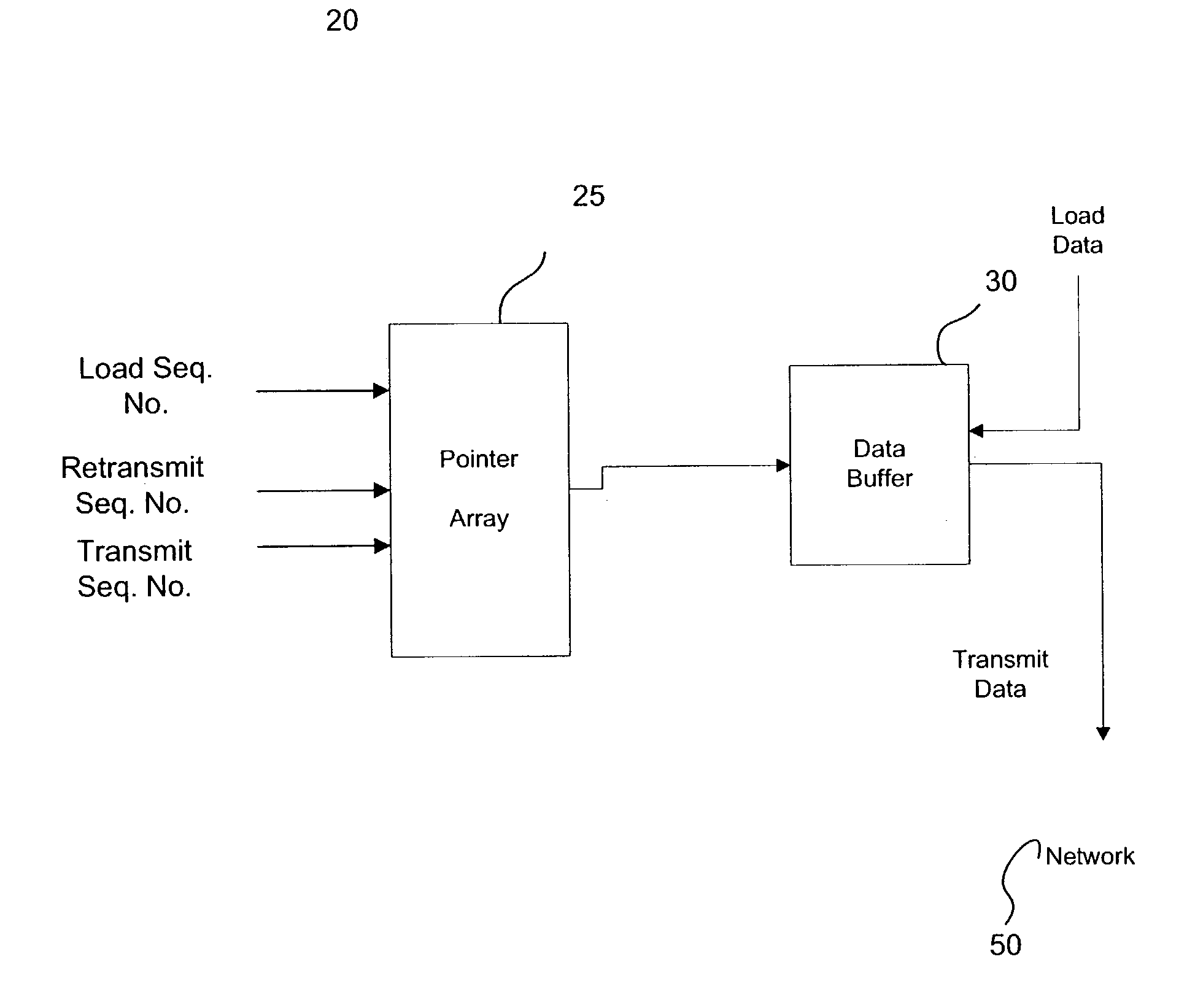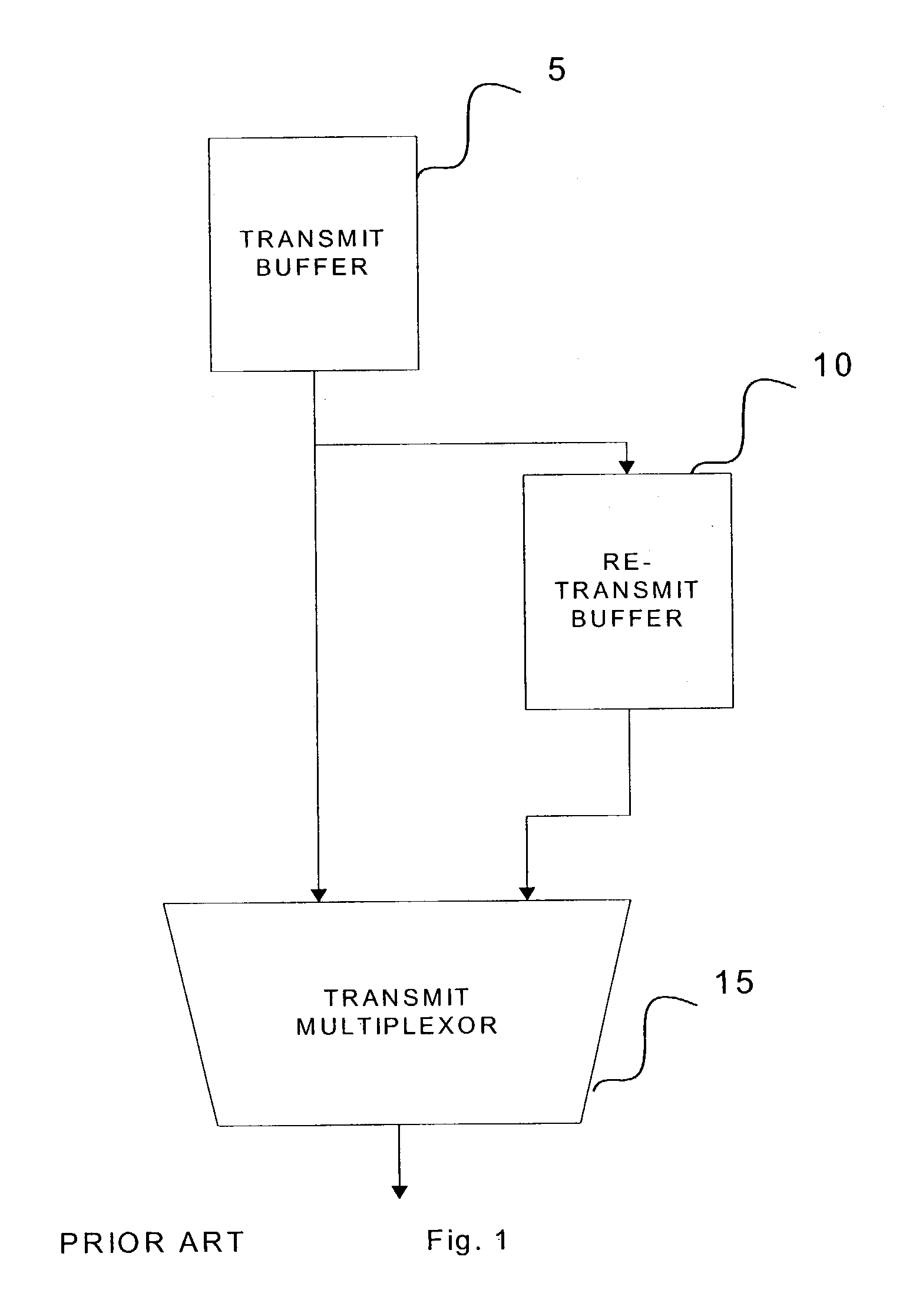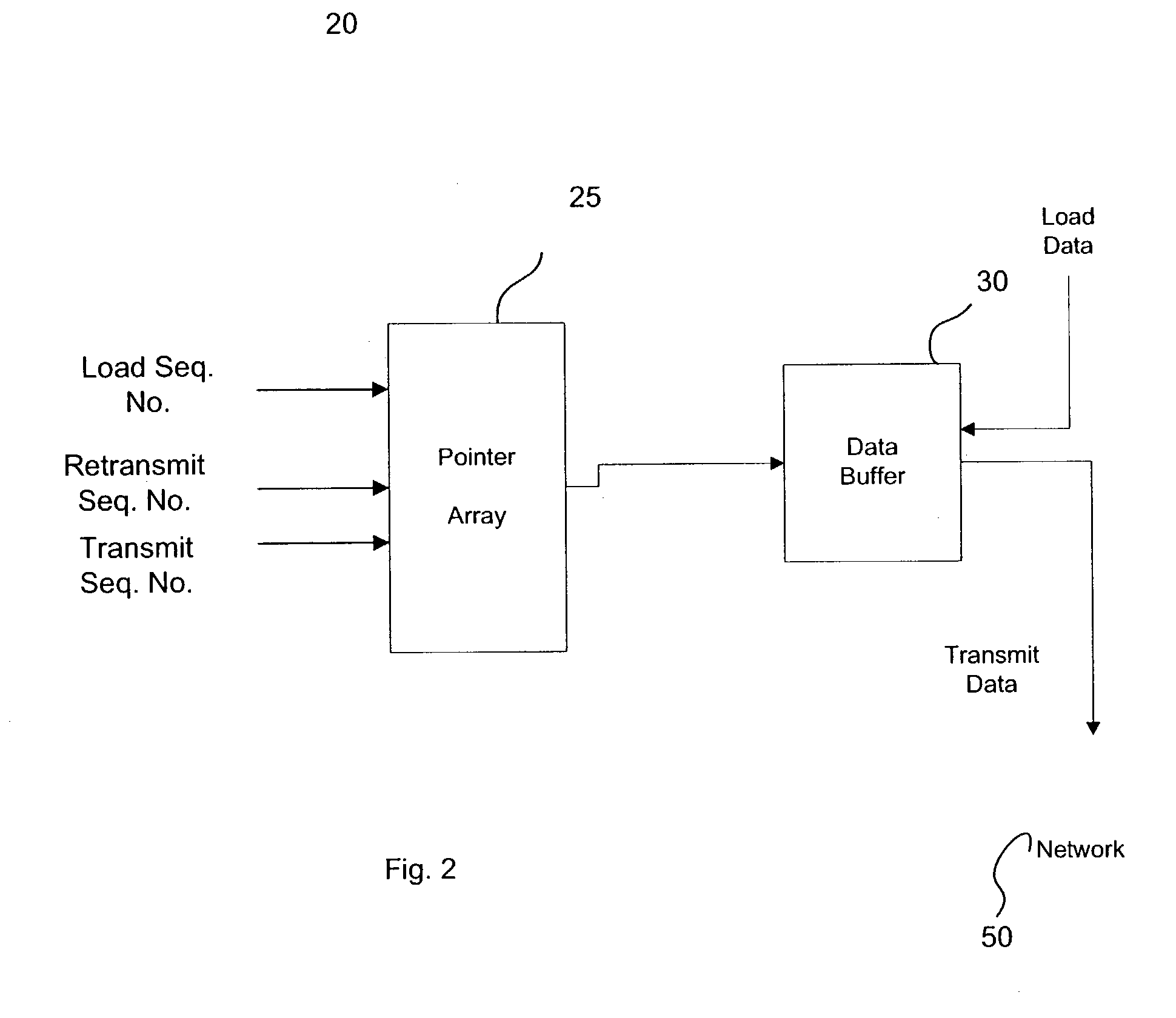Method and device for managing transmit buffers
a buffer and transmitting technology, applied in the field of transmit buffer management, can solve the problems of inefficient approach, subsequent transmitted packets to be retransmitted, packet received in error,
- Summary
- Abstract
- Description
- Claims
- Application Information
AI Technical Summary
Benefits of technology
Problems solved by technology
Method used
Image
Examples
Embodiment Construction
[0011] In an embodiment of the present invention, a method is provided for managing data buffers storing data for transmission on a communication link. The data buffer stores data packets awaiting transmission or retransmission. The data buffer may be organized as a first-in-first-out ("FIFO") circular queue. The packets in the data buffer vary in length. A pointer array contains addresses each pointing to a packet in the buffer. Typically, each pointer array entry will indicate the first address of a packet in the data buffer. The pointer array entries are in sequence identifying each packet in the data buffer one after the other.
[0012] Sequence numbers index the pointer array. These sequence numbers are: a load sequence number, a transmit sequence number and a retransmit sequence number. The load sequence number identifies the pointer array entry with the address of the next free memory location in the data buffer, if space is available. The transmit sequence number identifies the...
PUM
 Login to View More
Login to View More Abstract
Description
Claims
Application Information
 Login to View More
Login to View More - R&D
- Intellectual Property
- Life Sciences
- Materials
- Tech Scout
- Unparalleled Data Quality
- Higher Quality Content
- 60% Fewer Hallucinations
Browse by: Latest US Patents, China's latest patents, Technical Efficacy Thesaurus, Application Domain, Technology Topic, Popular Technical Reports.
© 2025 PatSnap. All rights reserved.Legal|Privacy policy|Modern Slavery Act Transparency Statement|Sitemap|About US| Contact US: help@patsnap.com



